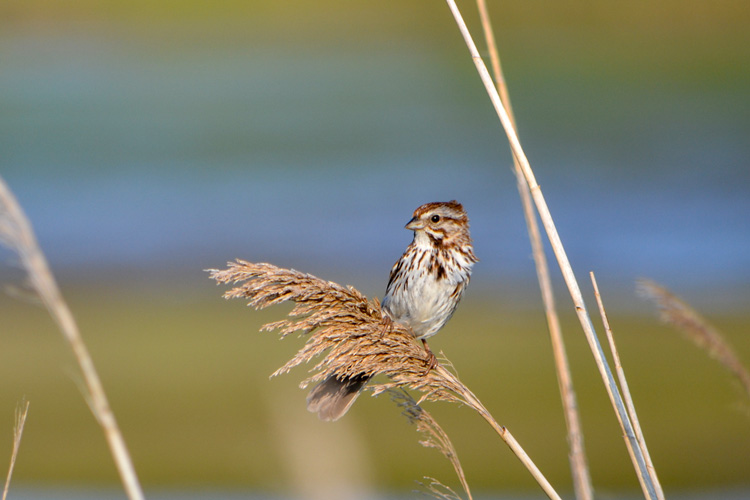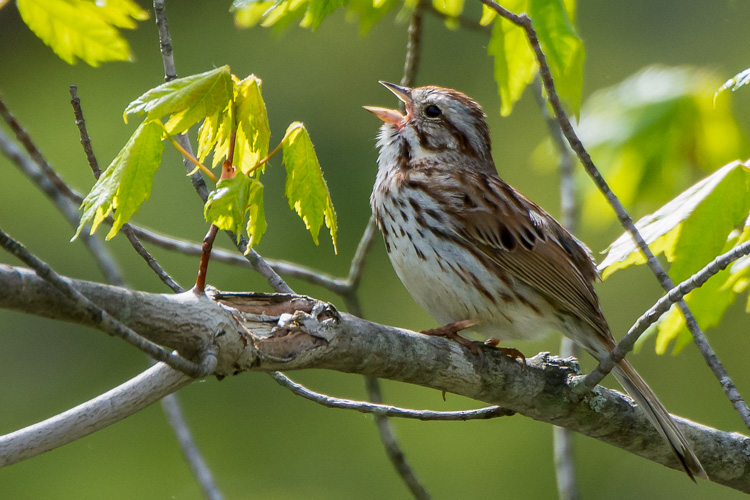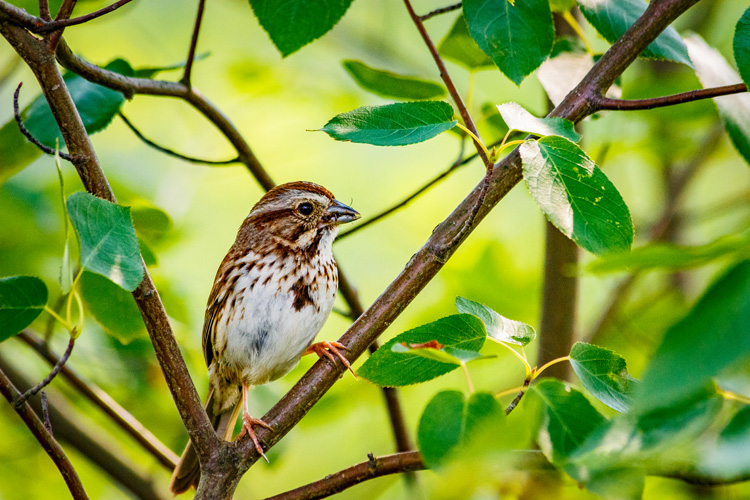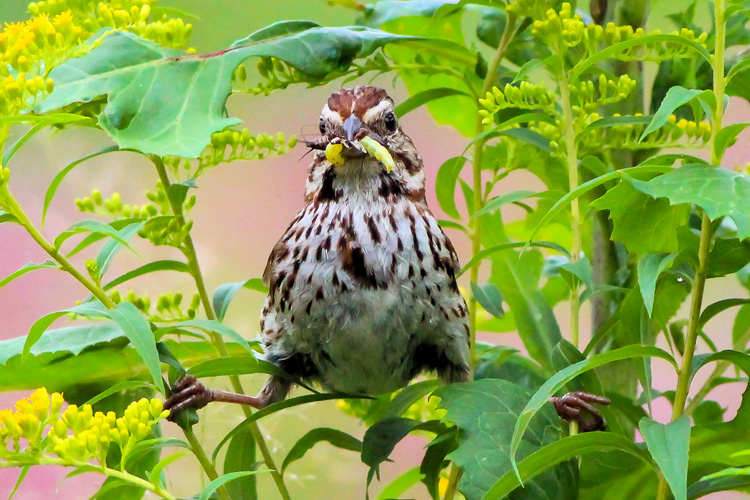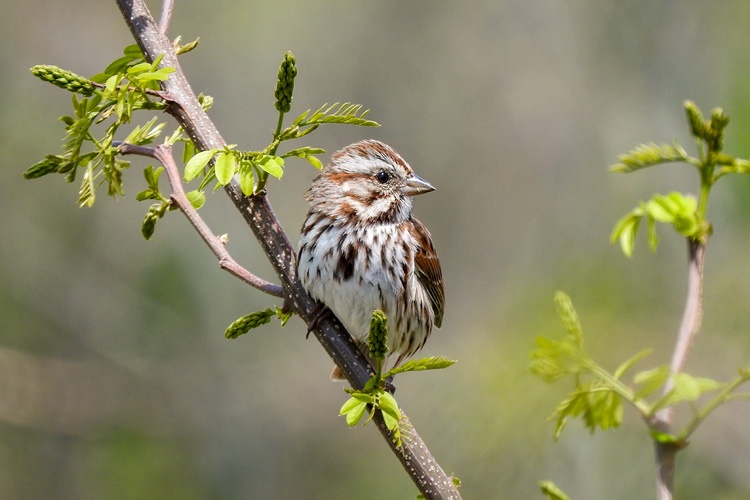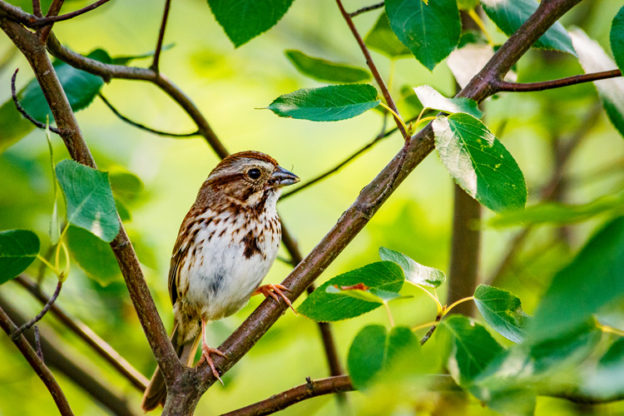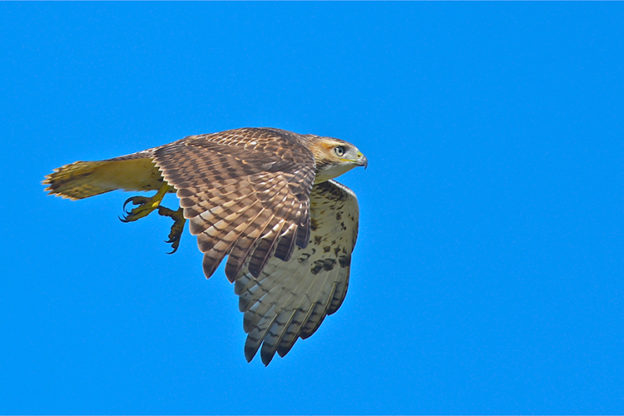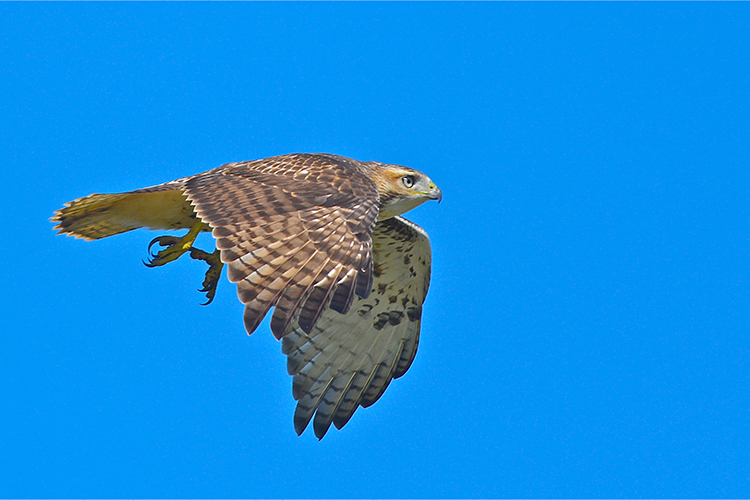“A bird doesn’t sing because it has an answer, it sings because it has a song.”
Maya Angelou
The Song Sparrow is a welcome visitor to fields, farms, parks, and gardens throughout Massachusetts. One of the first birds that many novice birders learn to identify by sound, the aptly named Song Sparrow may be heard singing its bright and cheery song from sunup to sundown from spring to fall.
The Song Sparrow took home the title of “most widely distributed bird” in Massachusetts in both of our Breeding Bird Atlas surveys. While many sparrow species are struggling to maintain their numbers, the irrepressible Song Sparrow seems to be holding its own. Its massive breeding range, adaptability, and ready use of almost any open or semi-open habitat have helped the species remain practically ubiquitous even in the face of suburbanization and other major landscape changes. Still, despite the stability of its breeding footprint, the Song Sparrow has demonstrated significant declines in overall abundance over the last half-century, suggesting a need for continued monitoring and conservation efforts.
While Song Sparrows can be found in Massachusetts year-round, you may see an uptick in their numbers in the fall as migrants pass through from their northern breeding grounds on their way to warmer places to over-winter. Look for a streaky sparrow perched on low shrubs in open, scrubby, often wet areas, pumping its tail in flight as it flits from bush to bush, and listen for the clear, crisp notes of the colorful repertoire of songs for which it is named.
This is your last chance to enter the 2020 Picture This: Your Great Outdoors photo contest! The deadline for entries is September 30, so enjoy these five submissions from past years and send us your own nature photography today!
